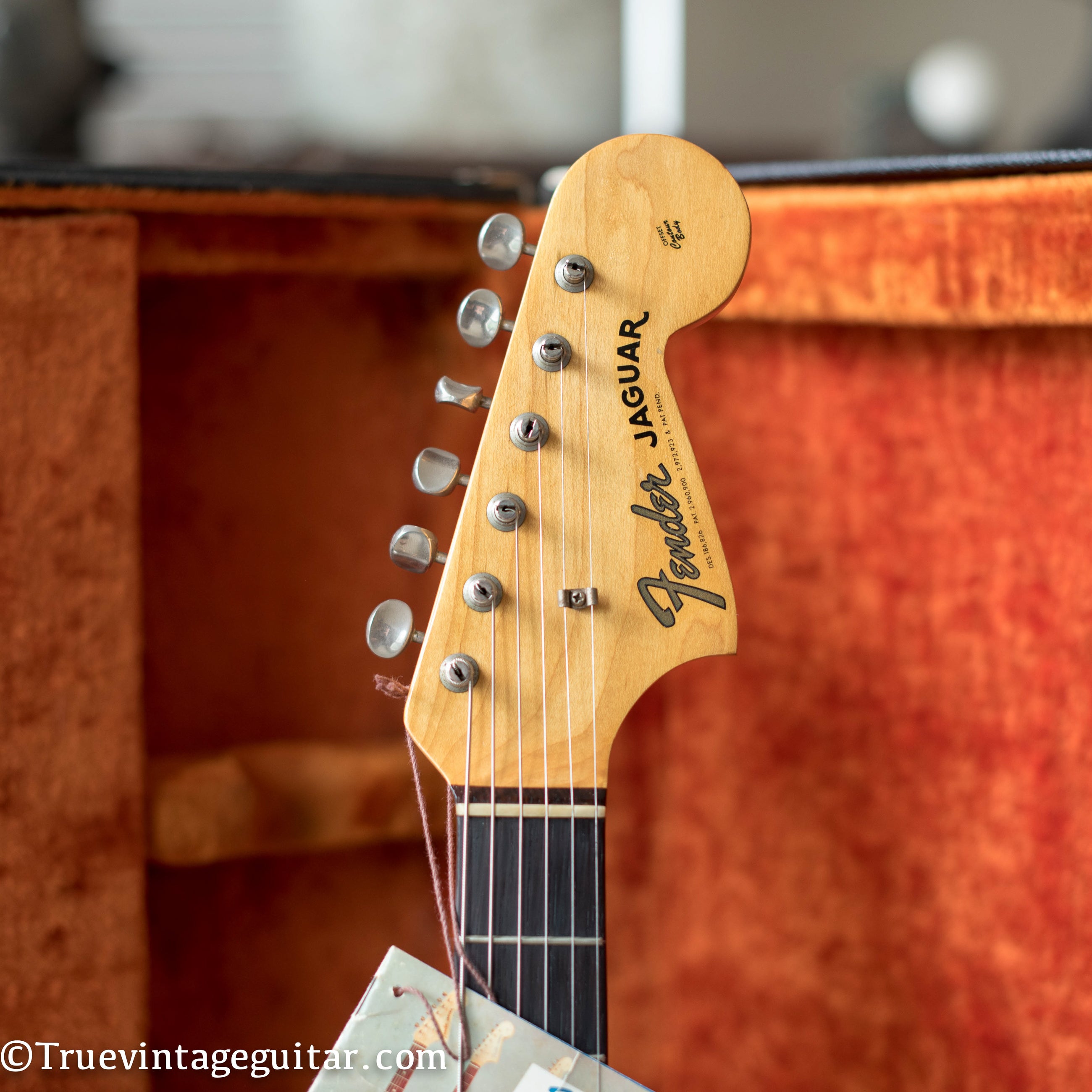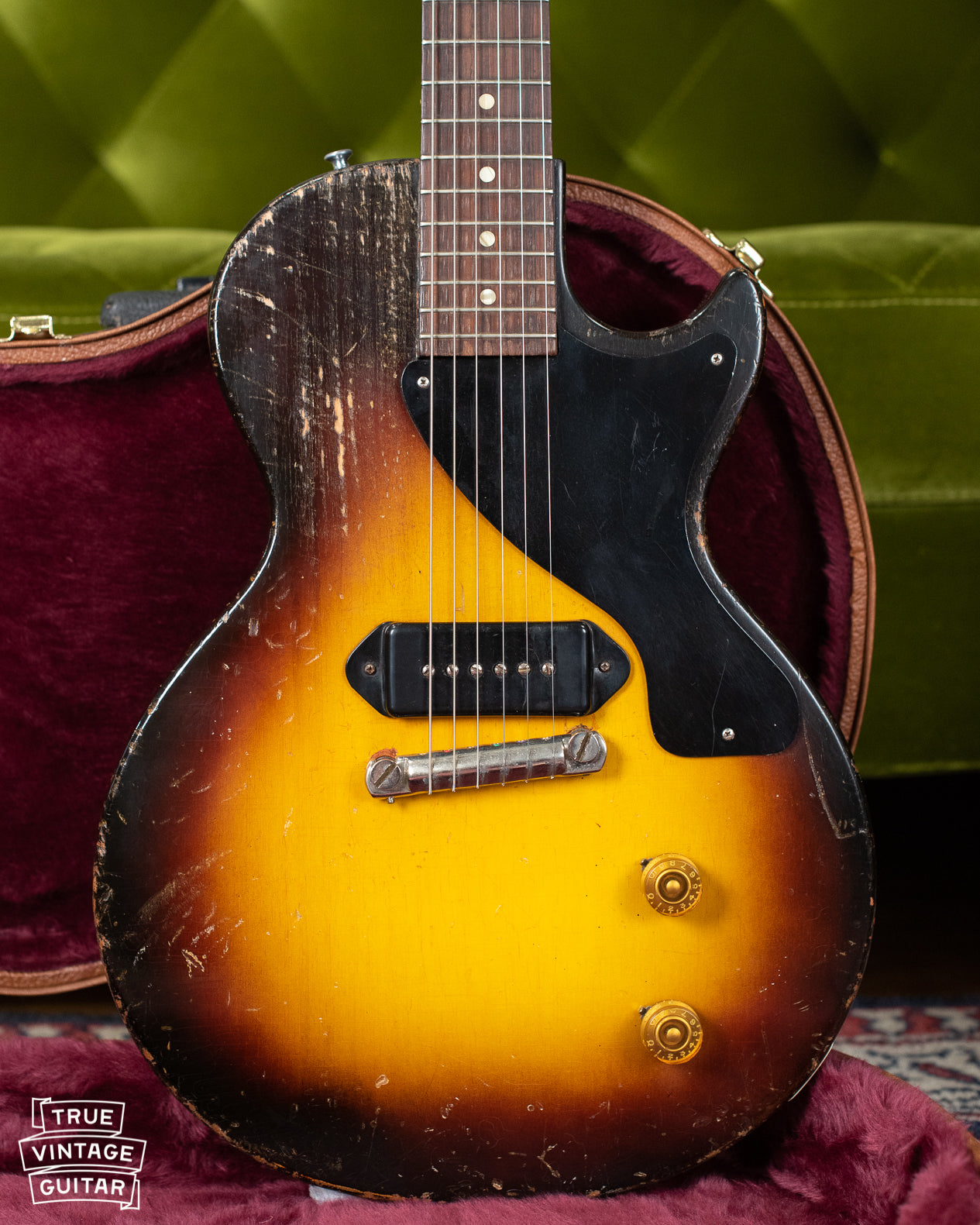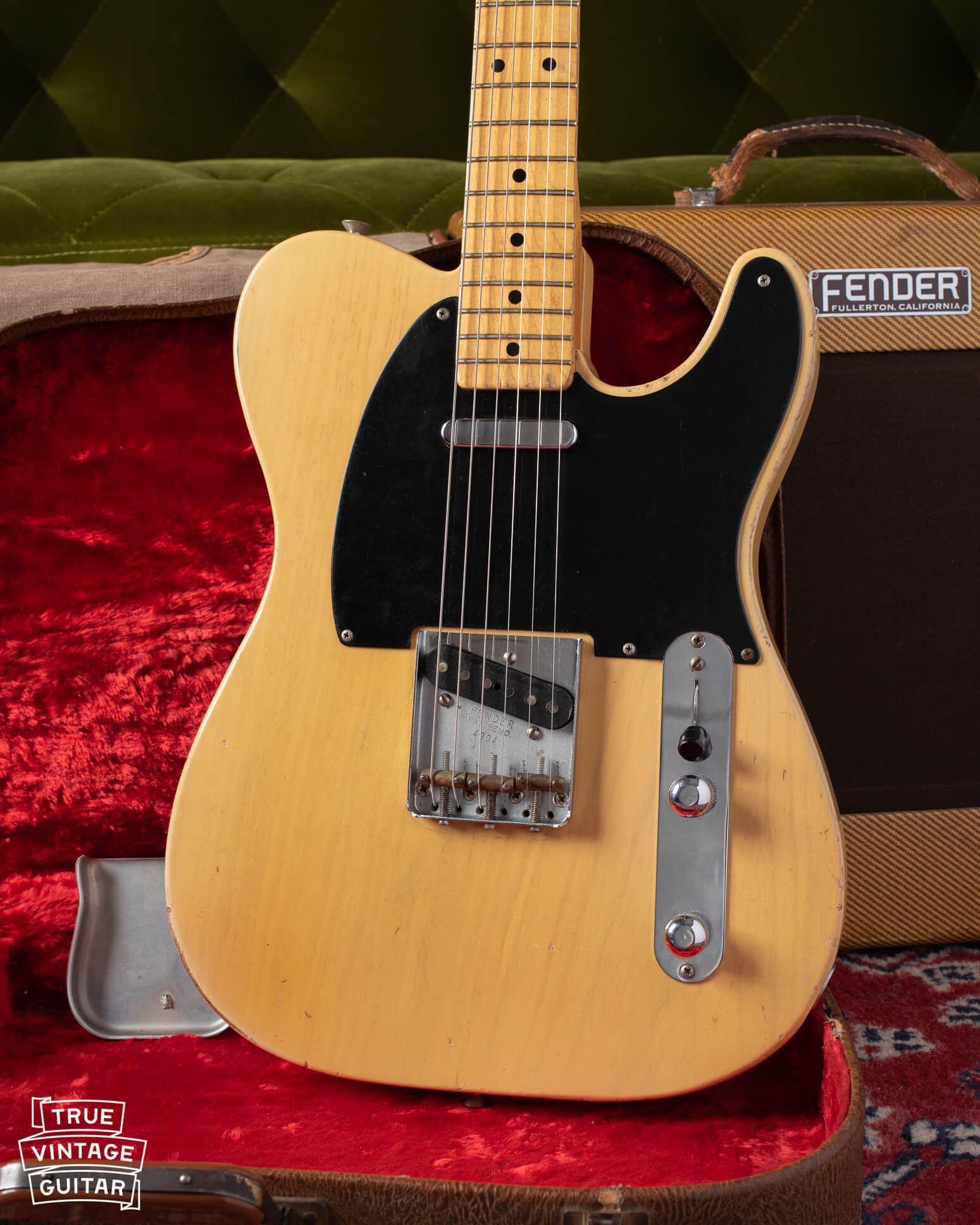Fender began production on the new Jaguar model in 1962. Like all Fender guitars in the 1960s, various aspects of the guitar changed gradually throughout the 1960s. I haven't met a 1960s Fender Jaguar I couldn't like, but I will admit that I prefer some time periods over others. Which do you prefer? I'm cataloging one Fender Jaguar from each year in the 1960s in order to point out some of the main differences between them.
I'm always a Fender guitar buyer, but I'm especially looking for Fender guitars made in the 1960s. You can contact me here to sell a vintage Fender guitar.
Or if you're looking for help with Fender guitar dating, check out How to date a vintage Fender Jaguar guitar.
You can check out Fender Jaguars from 1962 and 1963 here: 1962 and 1963 Fender Jaguars.
1964
By 1964, all of the Fender guitars would have been finished using the paint stick screwed to the neck pocket to support the guitar during the finishing process. However, most of the guitars will still have the nail holes in the top. The pickups during this time period begin transitioning from the double black flat work with no date, to a mixture of grey and black. Many of them will have a yellow date stamp with the month, day, and year that the pickup was made.
Fender guitars from 1964, especially Jaguars, are typically exceptional examples that are a joy to play. This example is a 1964 Fender Jaguar with the less common Blond finish over Ash body (as opposed to the more common Alder body). The Blond finish is distinguished from the Olympic White finish by the fact that the Blond is semi-translucent and the peghead is finished natural. Olympic White finishes, even if they've faded to a cream color, are always opaque and should always have a matching headstock if on a Jaguar. Lastly, the tuners from mid to late 1964 transition to the double line Kluson variety instead of the single lines used from 1956-1964.

1965
1965 is a very important year for the Fender Electric Instrument Company because Leo sold it to CBS on January 5th. Many players and collectors regard the guitars made before 1964 as superior to those that came later. You may have heard the term "pre-CBS" to denote guitars made before the sale of the company. Since nothing much changed until about the summer of that year, I still consider the guitars made in the first half of the year to be pre-CBS.
This 1965 Fender Jaguar is a good example of a transitional guitar. The Sunburst finish exhibits the more target shaped, thinner red layer of the mid 1960s when compared to the 1963 Fender Jaguar from yesterday's post. The fretboard features small pearloid dot shaped markers and binding compared to the more austere look of the clay dots and no binding.





